A recent groundbreaking assessment has unveiled a sobering reality: over one-third (nearly 38 percent) of the world’s tree species are on the brink of extinction. This alarming figure comes from the first-ever Global Tree Assessment (led by Botanic Gardens Conservation International (BGCI) and the IUCN Species Survival Commission Global Tree Specialist Group, published by the International Union for Conservation of Nature (IUCN) Red List.
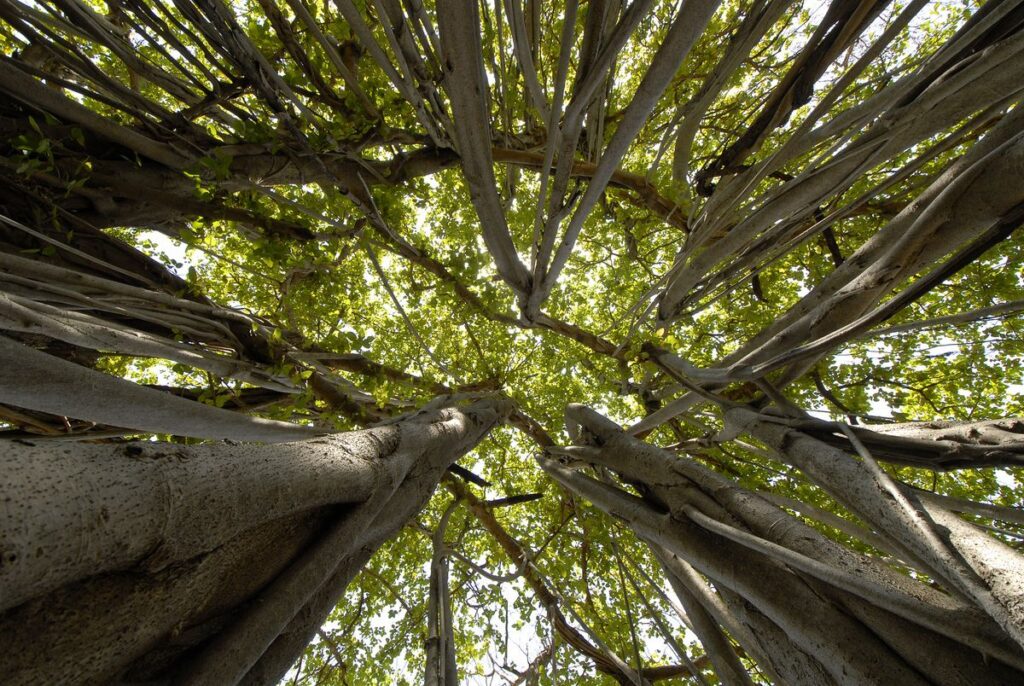
Trees are vital for life on Earth. They absorb carbon dioxide from the atmosphere and store it in trunks, leaves, branches, roots and in the soil. In return, they release oxygen, protect the soil from erosion, and play a crucial role in nutrient and water cycle. Photo: Dr. Anish Andheria.
The assessment, a monumental effort involving over 1,000 tree experts worldwide, has shed light on the perilous state of our planet’s arboreal diversity. A staggering 16,425 of the 47,282 tree species assessed are now classified as threatened.
Trees now make up over 25 percent of all endangered species, and their number is twice that of all threatened birds, mammals, reptiles, and amphibians combined. The threat to trees is global, with species at risk in 192 countries.
“[We] are releasing the global assessment of the world’s trees on the IUCN Red List, which shows that more than one in three tree species are threatened with extinction. Trees are essential to support life on Earth through their vital role in ecosystems, and millions of people depend upon them for their lives and livelihoods. As the IUCN Red List celebrates 60 years of impact, this assessment highlights its importance as a barometer of life, but also, crucially, as a unique tool guiding action to reverse the decline of nature,” said Dr Grethel Aguilar, IUCN Director General.
Why is this happening?
Many still view trees primarily as a wood source, fuelling unsustainable demand. Coupled with destructive agricultural practices, this is accelerating global deforestation.
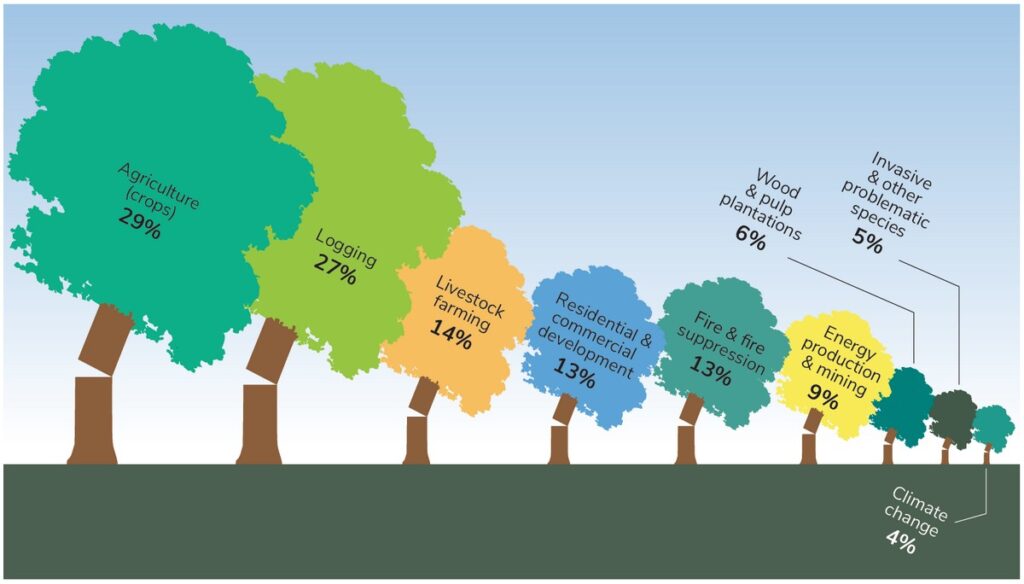
The main threats and percentage of trees affected as recorded on the IUCN Red list (2020.3). Infographic: State of the World’s Trees/ September 2021/ Botanic Gardens Conservation International.
Various factors contribute to this alarming trend, including:
- Deforestation and habitat loss: Clearing forests for agriculture, logging, livestock farming, and urban development is the primary driver of tree species decline.
- Climate change: Rising temperatures, altered precipitation patterns, and extreme weather events are disrupting ecosystems and stressing tree populations.
- Overexploitation: Excessive harvesting of timber, firewood, and non-timber forest products is depleting tree populations.
- Diseases and pests: Invasive species and pathogens are wreaking havoc on forests worldwide.
“This comprehensive assessment presents the first global picture of the conservation status of trees, which enables us to make better informed conservation decisions and take action to protect trees where it is urgently needed,” said Dr Malin Rivers, Global Tree Assessment lead at Botanic Gardens Conservation International, a Red List Partner. “The work is a global effort, with over 1,000 tree experts involved. We need to continue to work together to scale up local, national and international tree conservation action to support people and the planet.”
Why Trees Matter
Trees are essential to support life on Earth and millions of people depend on them for their lives and livelihoods. Trees hold immense cultural, spiritual, and symbolic value. A significant number of tree species, at least one in five, have documented human uses, often serving multiple purposes.
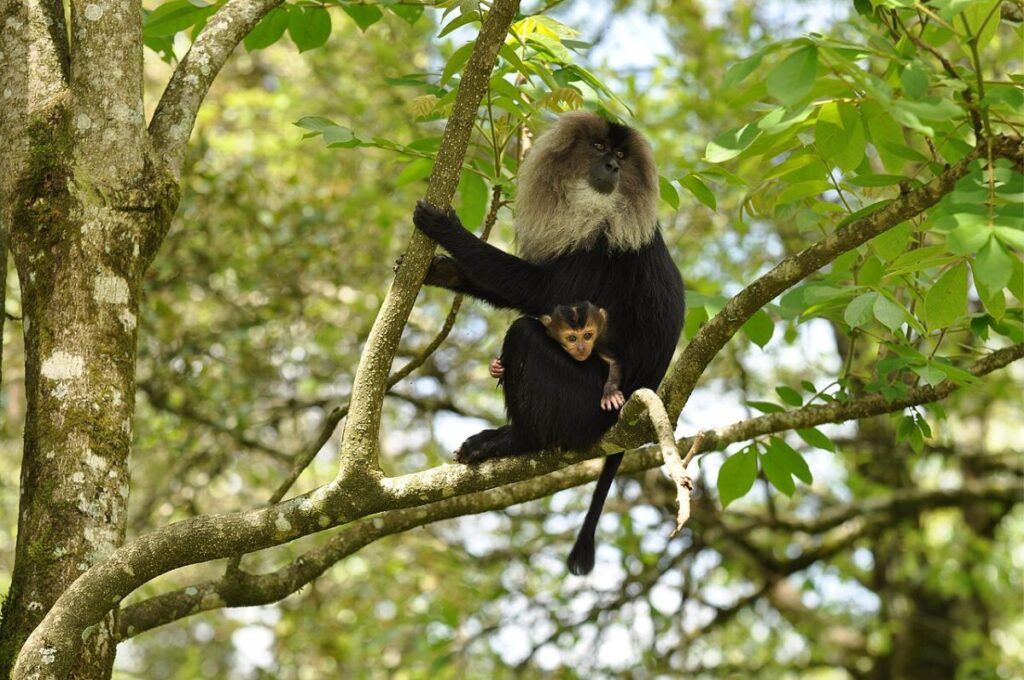
Trees play a pivotal role in shaping forests, and providing homes for approximately 50 percent of land-based plant and animal species globally. Photo: T. R. Shankar Raman/ Wikimedia Commons
Trees are the backbone of our ecosystems. They provide essential ecosystem services, such as:
- Fight climate change: Trees absorb carbon dioxide from the atmosphere, slowing the buildup of greenhouse gases, helping to mitigate climate change.
- Improve air quality: Trees remove air pollution, including particulate matter that can harm the lungs and provide oxygen.
- Lower the temperature: Trees, nature’s air conditioners, offer a multifaceted cooling effect by shading homes and streets, reducing urban heat island intensity, and releasing water vapour into the atmosphere through a process called transpiration.
- Improve soil health: Trees intercept rainfall, reducing surface runoff by allowing water to gradually flow down the trunk and into the soil. By breaking the force of the rain, trees prevent soil from eroding and improve soil fertility.
- Recharge groundwater: Mulching around the tree’s base creates a porous layer that further filters the water, allowing it to slowly seep into the ground and replenish groundwater supplies.
- Reduce flooding & water pollution: Trees can help reduce the impact of flooding by slowing down and blocking the flow of runoff. This process prevents stormwater, often laden with pollutants, from carrying these contaminants to waterways and ultimately the ocean.
- Reduce noise: Trees help mitigate noise pollution by absorbing sound waves and creating a buffer zone between noise sources, such as traffic and construction, and residential areas.
- Provide habitats: Forest ecosystems that consist of trees support a vast array of plant and animal species. The loss of trees endangers countless other plants, fungi, and animals.
- Shield against extreme weather: Many trees such as the mangroves are vital defences against extreme weather events. The intricate root systems and dense foliage of mangroves provide a natural barrier that reduces wave damage, protects against storm surges, and mitigates the impact of tsunamis.
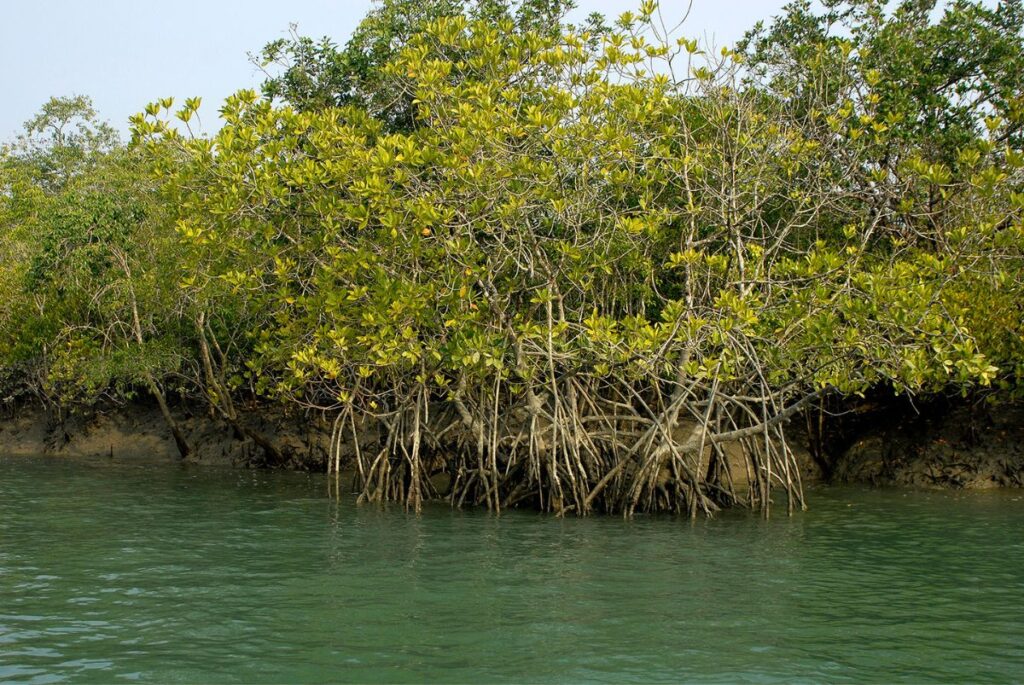
By binding and building soil, mangroves, often called the “coastal forests”, help to reduce erosion and keep pace with sea level rise. Their remarkable heat tolerance further enhances their ability to withstand the increasing impacts of climate change. Photo: Dr. Anish Andheria
Humans rely on trees for various purposes, including timber, medicine, food, and fuel. Over 5,000 tree species used for timber and 2,000 for medicine, food, and fuel are included on the IUCN Red List.
Being in a natural environment with trees and plants can reduce stress and promote relaxation.
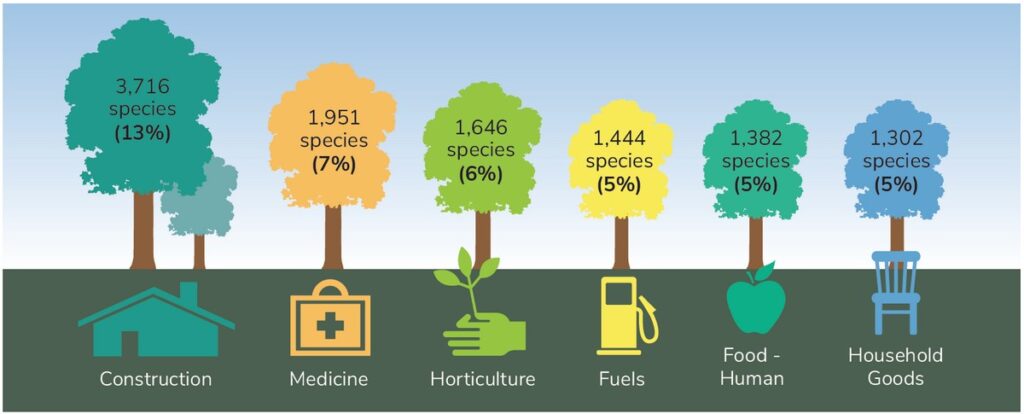
The most common uses for trees as recorded on the IUCN Red list (2020.3). Infographic: State of the World’s Trees/ September 2021/ Botanic Gardens Conservation International.
The loss of tree species will have far-reaching consequences for both ecosystems and human societies.
Taking Conservation Action for Trees:
Millennia-old tree species, adapted to changing climates, are now threatened with extinction mainly due to human activities.
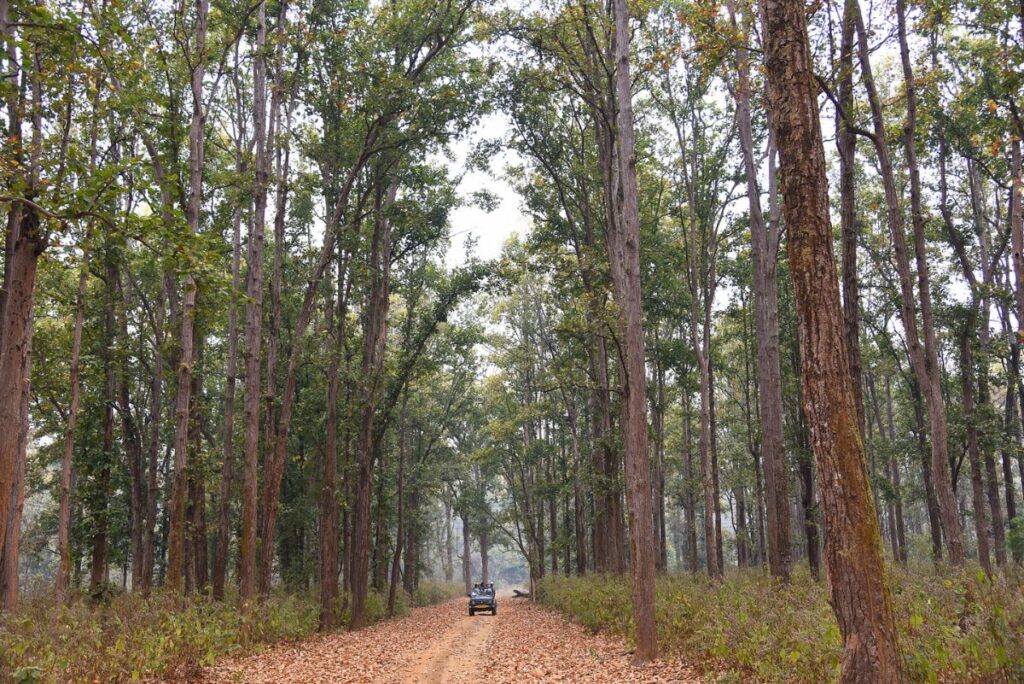
We must protect threatened trees and their ecosystems. This will safeguard biodiversity, support livelihoods, and ensure a healthy planet. Photo: Dr. Anish Andheria.
Many global conservation organisations are working diligently to protect trees and restore degraded forest ecosystems worldwide. To foster public support, organisations are raising awareness about the importance of trees and the dangers they face. Local communities are being educated on sustainable forestry practices to promote responsible forest management. Conservation professionals are being trained in tree identification, monitoring, and restoration techniques to enhance their expertise. Research on tree ecology and conservation is being supported to deepen our understanding of these vital ecosystems. Finally, organisations are advocating for strong policies and legislation to safeguard trees and their habitats for future generations.
The United Nations Decade on Ecosystem Restoration, launched on June 5, 2021, to coincide with World Environment Day, is a joint initiative of the United Nations Environment Programme and the Food and Agriculture Organization of the United Nations. This decade-long effort, spanning from 2021 to 2030, aligns with the Sustainable Development Goals deadline. Its primary objectives are to reverse ecosystem degradation, improve human wellbeing, mitigate climate change, and prevent biodiversity loss.
While concerted global efforts are underway to protect trees, individual action is crucial for long-term success. Empowering communities and individuals to participate in tree conservation is vital. By educating schoolchildren, local communities, and the wider public, we can inspire a new generation of conservationists and motivate broader action. This collaborative approach will ensure the sustainability of conservation projects and have a lasting impact on tree species worldwide.
Here are some ways you can participate in tree conservation as an individual:
- Report illegal tree cutting or damage to the relevant local authorities (such as Local Tree Officer, Forest Department, Police Department, Municipality Corporation, Local Panchayat Office, etc). In India, each state has its own rules and regulations regarding tree felling. To take action, find out which authority governs your location, as this varies by region.
- Reduce paper consumption and recycle paper products.
- Buy products made from sustainable materials.
- Support businesses that prioritise environmental conservation.
- Support organisations that work on Forest Ecosystem Restoration.
- Plant and take care of trees till they are about five years old. Plant them near your place of residence so that you can closely monitor their growth. Native trees are an important part of the food-chain and will support innumerable species of animals – birds, bees, butterflies, mammals, etc., thus improving local biodiversity. Exotics, on the other hand, are of not use to native species of animals.
- Grow native tree species, not exotics, even if exotic species (such as Gulmohar, Chinese bamboo) are popular with nurseries.
- Buy books that educate you about native species. Here are two recommended titles to get you started: 1) Jungle Trees of Central India by Pradip Krishen and 2) The Book of Indian Trees by K C Sahni (published by Bombay Natural History Society).
- Reduce your carbon footprint by conserving energy and water.
- Choose eco-friendly transportation options.
- Educate yourself and others:
- Read and share information about the importance of trees and forest ecosystems with friends and family.
- Volunteer with organisations that educate the public about nature conservation.
- Join environmental organisations and participate in their campaigns.
- Write letters to newspapers or blogs advocating for tree protection.
By implementing these strategies, we can work towards a future where trees thrive and continue to provide essential ecosystem services for generations to come.
Knowledge credit:
- IUCN Press Release: https://iucn.org/press-release/202410/more-one-three-tree-species-worldwide-faces-extinction-iucn-red-list
- State of the World’s Trees: https://www.bgci.org/resources/bgci-tools-and-resources/state-of-the-worlds-trees/
- Global Tree Assessment: https://www.bgci.org/our-work/networks/gta/
About the author:
Yogi Ramachandran is a website developer with a passion for wildlife conservation. Leveraging his experience in online marketing, he actively contributes to WCT’s digital initiatives, including content creation, website development, and maintenance.
Disclaimer: The author is associated with Wildlife Conservation Trust. The views and opinions expressed in the article are his own and do not necessarily reflect the views and opinions of Wildlife Conservation Trust.
Your donations support our on-ground operations, helping us meet our conservation goals.
Related Links
- IUCN’s latest Red List Assessment of the Ganges river dolphin
- Losing Flock Music
- In Praise of the Ghost Tree
- From Under Our Feet
- A Water Heater of Hope
- Protecting Our Protectors – Health Challenges Faced By India’s Frontline Forest Staff
